Introduction: Revolutionizing Disaster Relief
It's not the strongest of the species that survives, nor the most intelligent, but the one most responsive to change. – often attributed to Charles Darwin, this quote highlights how adaptability is key to survival, especially during crises. In today's world, where natural disasters seem as regular as morning coffee, this statement rings truer than ever. One might wonder, can technology offer the flexibility needed to respond to such challenges effectively? The rapidly advancing field of AI-powered swarms might just be the answer. Imagine a battalion of tiny robots, each one equipped with cutting-edge AI, banding together to tackle the chaos and destruction left by disasters. These robots might not be superheroes, but they might just redefine what heroism looks like in disaster relief. Pioneering minds like Kevin Kelly and leading AI researchers Jürgen Schmidhuber and Fei-Fei Li have long discussed the transformative power of AI in reshaping our world, but how exactly these swarms work and their implications on disaster relief is a narrative waiting to be unfolded.
Understanding the Mechanics of AI-Powered Swarms
To truly appreciate the wonder of AI-powered swarms, you need to peek behind the curtain and see what's making these tiny marvels tick. The heart and soul of these swarms are two main components that hold everything together like peanut butter and jelly on a PB&J sandwich.
Communication Protocols
Communication is key, not just in relationships, but also for robotic swarms. These little robots chat through sophisticated communication methods like wireless networks and peer-to-peer systems. Picture a group of friends texting at warp speed, sharing real-time updates, plans, and even changing their path if needed. This allows these swarms to adapt and respond swiftly, much like a flock of birds changing direction in perfect unison.
Adaptive Algorithms
Have you ever wondered how birds miraculously dodge obstacles mid-flight? AI swarms operate similarly, thanks to adaptive algorithms. These algorithms, driven by machine learning, allow swarms to adjust based on the environment. They are like super-smart chameleons, constantly optimizing their behavior to the task at hand. Whether gliding over rubble or gently picking up debris, these robots adapt faster than a kid bored with the last app they downloaded!
Current Applications in Disaster Relief
Picture this: a chaotic scene of rubble and despair, where hope seems as fleeting as a midnight snack in a college dorm. Now imagine, seemingly out of nowhere, an organized swarm of robotic helpers descends, like a team of superhero ants on a picnic basket! AI-powered swarms are not just the stuff of sci-fi movies; they're being deployed in real-world disaster scenarios and making significant impacts. Let's dive into some present-day examples, where these tech-savvy troops have jumped into action and taken on Mother Nature's greatest challenges.
Recent Deployments in Earthquakes
Remember the epicenter? Not to steal the spotlight from those dramatic seismograph charts, but robotic swarms have become stars in earthquake aftermaths. Following shivers and shakes in places like Japan, these intelligent bots don't just wait for aftershocks; they spring into action for search and rescue missions. Think of them as the ultimate multitaskers—surveying damaged structures, locating trapped individuals, and even lending a robotic hand to first responders. It's not just about keeping boots on the ground—it's about offering mechanical wings where humans might struggle.
Flood Response Mechanisms
When it comes to floods, there’s no silver lining unless it's reflected off a life raft. However, AI-powered swarms are a deluge of efficiency. Take the instance in India, where these robotic swarms map vast inundated areas faster than a human can say "Oh no, I forgot my umbrella!" With advanced sensors, they team up to remove debris, repair dykes, and even restore communication lines. Essentially, they are the GPS to safety when roads are replaced by rivers.
Overcoming Technical and Ethical Challenges
Before we get too caught up in the digital daydream of robots saving the day, let's pull a Benjamin Franklin and remember, “An ounce of prevention is worth a pound of cure.” There's a reason that phrase is older than your grandma's cookie recipe—it's true. The road to fully integrated, disaster-ready robot teams has its fair share of technical potholes and ethical conundrums. Let's play a quick game of 'What If' as we tackle these roadblocks.
Technical Hurdles
Isn't it convenient when your phone dies just as you need your Uber app the most? (Pro tip: It isn’t.) Similarly, one of the biggest hurdles swarming this conversation revolves around power—a.k.a battery life. Robotics need a charge that lasts longer than a toddler's sugar high. Navigation in complex environments poses another challenge because let’s face it, rogue trees and debris don’t respect Google Maps. Then, there’s the question of sensors—an area akin to playing Operation, where the goal is precision without a buzz. Developers must ensure these sensors are accurate and durable, so robots don't just stumble around like they've got two left wheels.
Ethical Considerations
Venturing into the ethical territory, ever heard of Isaac Asimov’s laws of robotics? Well, they didn’t just happen by accident. It's crucial to remember the discussions around accountability and decision-making. If a robot accidentally crushes grandma's heirloom garden gnome...who’s responsible? Decision-making algorithms must adhere to a moral compass that genuinely understands complex humanitarian needs, as giving robots ethical guidance is trickier than deciphering the meaning of abstract art. This involves engaging ethicists right in the think tank rooms—an amalgamation of AI and empathy for a better tomorrow.
Societal Impact and Acceptance
As AI-powered swarms promise to redefine disaster relief, it's essential to examine their broader impacts on society. How will communities adapt to this new wave of technology? The implications are vast, from public perception to job displacement, and understanding these factors is crucial for successful implementation.
Public Perception
When we introduce cutting-edge technology like robotic swarms, public opinion plays a key role in determining its success. Surveys and research highlight diverse views, often influenced by exposure and education. Many people recognize the potential benefits, like enhanced public safety and response efficiency. However, the fear of the unknown also breeds skepticism. A recent study by Ipsos showed that while a majority in several countries are optimistic about AI, a significant portion still harbors concerns about its ethical use.
Building public trust hinges on transparency. When people understand how these swarms operate and their benefits, acceptance is likely to increase. Community engagement initiatives can demystify the technology, emphasizing how it empowers rather than replaces human action during crises.
Potential Job Displacement
A common concern with automation is job loss. AI-powered swarms will undoubtedly change the landscape of certain professions. Tasks traditionally performed by on-ground human teams may transition to robotic swarms. This shift raises fears of human workers being sidelined.
Yet, history shows us that technology often creates new job roles even as it disrupts others. For instance, the rise of the tech industry jobs provides a model of how adaptation can unfold. The evolution of disaster relief engineering will likely open opportunities for roles such as swarm coordinators, drone maintenance experts, and data analysts. Communities, therefore, need to invest in upskilling programs that prepare workers for these emerging fields.
The Role of Collaboration in Advancing Robotics
In the quest to propel AI-powered swarms to their full potential, collaboration emerges as a pivotal element. By aligning cross-sector expertise, we can unlock innovative solutions that drive this technology forward.
Interdisciplinary Partnerships
A successful implementation of robotic swarms hinges on combining a range of disciplines. Engineers provide the mechanical expertise necessary to develop durable robots. At the same time, AI researchers focus on refining algorithms to enhance swarm efficiency. Policymakers, on the other hand, work on creating regulatory frameworks that ensure safe deployment. Collaboration with humanitarian organizations, such as the United Nations, ensures that technological advances remain human-centered.
For example, DARPA's Robotics Challenge fostered collaboration from diverse fields to solve specific robotic mobility issues. This cross-disciplinary approach is crucial in producing well-rounded, effective solutions for real-world applications.
International Cooperation
While each nation tackles its unique challenges, disasters often know no borders, necessitating international collaboration. Sharing resources—from technology to manpower—enables a unified approach that enhances global resilience.
Global initiatives, such as the Global Innovation Exchange, facilitate knowledge-sharing and resource pooling. These platforms encourage joint ventures in developing and testing swarm technologies, accelerating progress.
- Innovation Crafting: Continents come together at conferences like ICRA's yearly robotics conferences.
- Resource Pooling: International coalitions provide pooling funds and equipment for research and real-world applications.
- Policy Synchronization: Aligning international policies ensures that robotics development remains ethical and accountable.
Ultimately, by fostering an ecosystem of cooperation at both national and international levels, we can surmount barriers that limit the potential of AI-powered swarms, paving the way for their seamless integration into disaster relief efforts.
AI Solutions: How Would AI Tackle This Issue?
As we explore the future of AI-powered swarms in disaster relief, let's dive into how artificial intelligence can tackle challenges and improve efficiency. This section shows how AI optimizes the performance of robotic swarms, streamlining processes and enhancing effectiveness. It is important to note that AI isn't a magical solution. Instead, it’s a powerful tool that, when wielded correctly, can create transformative change.
Autonomous Task Allocation
In disaster situations, immediate decisions are crucial. AI can facilitate autonomous task allocation, which means that robots can evaluate their surrounding environment and assess the most urgent repairs needed. This way, they won’t waste time focusing on minor issues when lives are at stake. For example, if a robot identifies that a bridge is about to collapse, it can prioritize resources to stabilize it while simultaneously allocating another group to assist with rescue operations nearby.
Predictive Maintenance
Imagine if we could foresee a disaster before it happens! While we might not possess that superpower just yet, AI can use trends and historical data to predict infrastructure weaknesses, allowing us to perform proactive maintenance before disasters strike. Implementing machine learning algorithms to analyze historical data can help identify which locations and structures are most likely to fail under stress, helping ensure that repairs are made before calamity unleashes its wrath.
Data Analysis for Better Planning
Data is like the treasure map for disaster relief planning. AI-driven analytics can process enormous amounts of data from various sources, ranging from weather patterns to social media updates. Using tools such as Tableau or H2O.ai, we can derive insights that help strategize effective relief efforts tailored to specific needs. This includes understanding population density, needs assessment, and optimal resource allocation. This strategic data approach prevents ineffective use of resources and ensures that help arrives where it's needed most.
Conclusion: Embracing the Future
The potential of AI-powered swarms marks a pivotal moment in the field of disaster relief engineering. As society becomes more reliant on technology, embracing innovations like these could be a game changer. The future beckons with the promise of efficient, expedited disaster responses, harnessing the precision of AI to save lives. It's essential to address the ethical implications as we move forward. What happens when machines take the reins in humanitarian efforts? Who is responsible when something goes awry? Through careful consideration, focusing on the human element is paramount—after all, these technologies should serve humanity, not replace it.
To guide the implementation of these AI innovations, we propose the following Action Schedule/Roadmap, spanning from Day 1 to Year 2. This plan can be employed by institutions, organizations, or governments seeking to advantageously elevate their disaster relief operations:
Day 1: Project Launch
Assemble an interdisciplinary team of AI researchers, engineers, public health experts, and disaster relief strategists. Establish clear communication pathways and identify key objectives, ensuring everyone is on the same page from the start.
Day 3: Define the Vision
Engage in brainstorming sessions to lay the groundwork for project goals. What do you want the AI-powered swarms to achieve? Consider local needs, potential hurdles and available resources. Make a detailed plan that these machines will follow.
Week 1: Technology Assessment
Evaluate current technology capabilities. Conduct tests on existing robotic models to identify strengths and weaknesses. Collaborate with universities like MIT or organizations like NASA for insights into advanced robotic functionalities.
Week 2: Community Engagement
Host focus group sessions within the community to gain feedback. Transparency is key in showing how AI swarms can improve disaster response without compromising human jobs. Providing clear examples of how communities benefit can alleviate local fears.
Month 1: Prototype Development
Start developing a prototype of AI-powered swarms. Implement modular designs, allowing for easy updates in algorithms and software. Collaborate with tech giants such as Google and Amazon to integrate cloud processing and intelligent learning capabilities.
Month 2: Pilot Testing
Conduct automated pilot tests, simulating a variety of disaster scenarios to observe swarm responsiveness in controlled settings. Analyze behaviors and adjust algorithms for optimal performance. Encourage real-time interventions for troubleshooting.
Year 1: Build Partnerships
Form strong partnerships with NGOs and governmental agencies. Organizations like the Red Cross can provide essential connections in the field. Align objectives to maximize resource sharing and bolster local trust.
Year 1.5: Apply Feedback Loops
Integrate feedback loops from the pilot implementations, adjusting the operational parameters of the robotic swarms based on collected data. Tweak the algorithms for further adaptations and propensity for effective decision-making.
Year 2: Full-Scale Deployment
Launch fully operational AI-powered swarms in various disaster-prone regions, equipped with data-gathering technologies to monitor their effectiveness. The data collected will not only impact immediate disaster relief, but will also provide a significant repository of insights to shape future projects.
In this way, as we embrace the future, our approach adopts a cycle of innovation, collaboration, and responsibility—ensuring that technology remains a tool for unity and survival rather than fear and confusion.
FAQ
Q1: How do AI-powered swarms operate in disaster situations?
A1: AI-powered swarms are like teams of little robots that work together. They use smart technology to figure out where to go and what to do. For example, if a building collapses, these robots can quickly navigate the area, look for survivors, and help by delivering supplies. They can assess the situation and take action without putting human lives at risk. You can learn more about [robotic swarms](https://www.nasa.gov/robotic-swarms) that help in these kinds of rescue missions.
Q2: What are the advantages of using robotic swarms for disaster relief?
A2: There are several benefits to using robotic swarms during emergencies:
- Speed: They can respond quickly, helping to save lives when every second counts.
- Safety: Robots can work in dangerous areas where humans might get hurt, like collapsed buildings or flooded areas.
- 24/7 Operation: Unlike humans, robots don’t get tired, so they can keep working around the clock.
- Scalability: You can send out many robots together, allowing them to cover a larger area more effectively.
Q3: How can we ensure the ethical use of AI in disaster relief?
A3: To use AI ethically, we need to think about a few important things:
- Guidelines: Create clear rules for how to use robotic swarms responsibly.
- Accountability: Make sure there are ways to hold people responsible if something goes wrong.
- Discussions: Include ethicists—people who study right and wrong—when planning how to use these technologies.
For example, organizations like the [IEEE Global Initiative on Ethics of Autonomous and Intelligent Systems](https://ethicsinaction.ieee.org/) are exploring how to ensure that robotics is used in a good way.
Q4: Can these technologies be used in non-disaster scenarios?
A4: Yes! AI-powered swarms are not just for disasters. They can also help in other areas like:
- Construction: Robots can work together to build structures efficiently.
- Agriculture: Swarms can help with planting and monitoring crops, improving food production.
- Maintenance: They can check and repair equipment, which is crucial for keeping everything in good shape.
For instance, companies like [SwarmFarm Robotics](https://swarmfarm.com/) are using these technologies in farming to increase productivity.
Q5: Are there any real-life examples of these swarms helping in disasters?
A5: Absolutely! One great example is during the [2015 Nepal earthquake](https://en.wikipedia.org/wiki/2015_Nepal_earthquake). Robotic swarms were deployed to assist in finding survivors and assessing the damage. They helped search rubble quickly and efficiently, showcasing how helpful technology can be in real-life situations.
Q6: What is the future of AI-powered swarms in disaster relief?
A6: The future looks bright! As technology improves, we can expect swarms to become smarter, faster, and even more helpful. Research is ongoing, and with collaboration between tech companies, governments, and humanitarian organizations, swarms could transform how we respond to disasters. Imagine a world where robotic swarms are standard tools in our disaster response toolbox!
Wait! There's more...check out our gripping short story that continues the journey: The Breath of Change
Disclaimer: This article may contain affiliate links. If you click on these links and make a purchase, we may receive a commission at no additional cost to you. Our recommendations and reviews are always independent and objective, aiming to provide you with the best information and resources.
Get Exclusive Stories, Photos, Art & Offers - Subscribe Today!
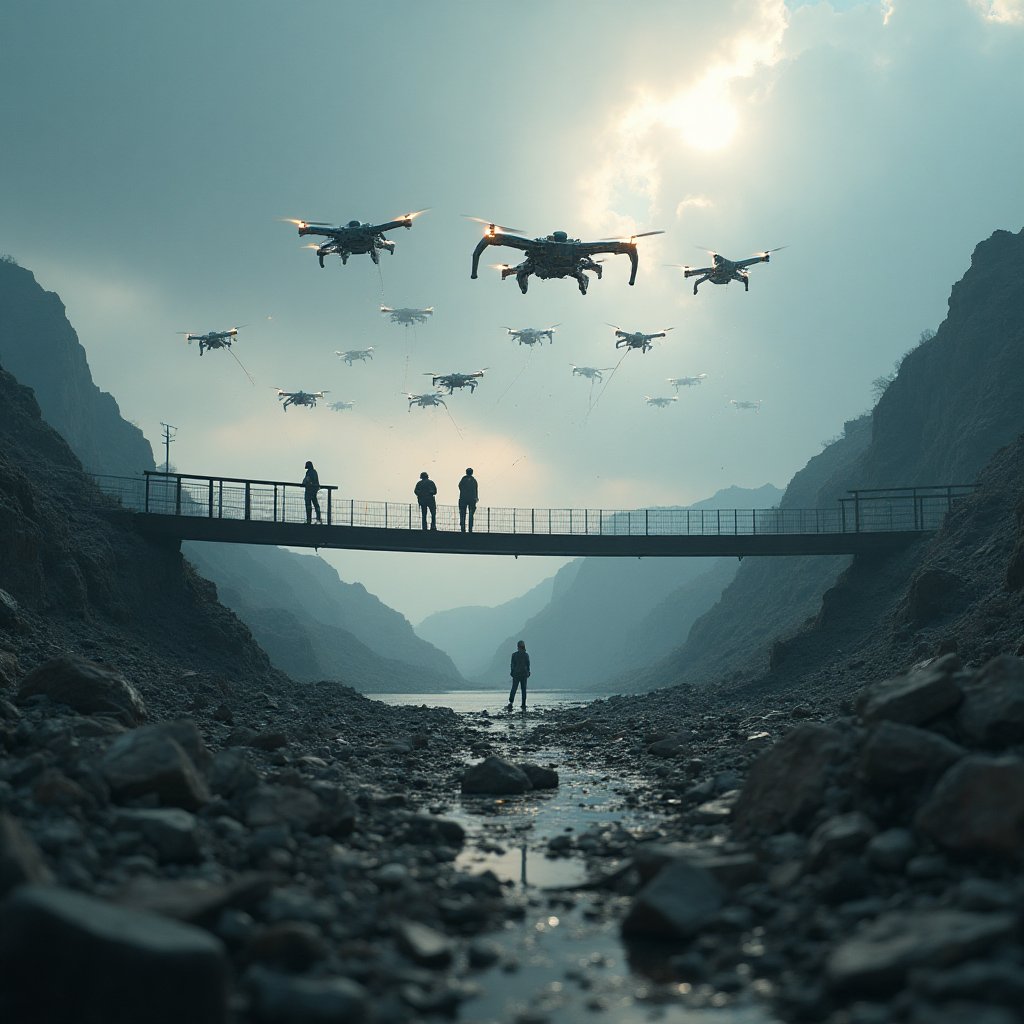
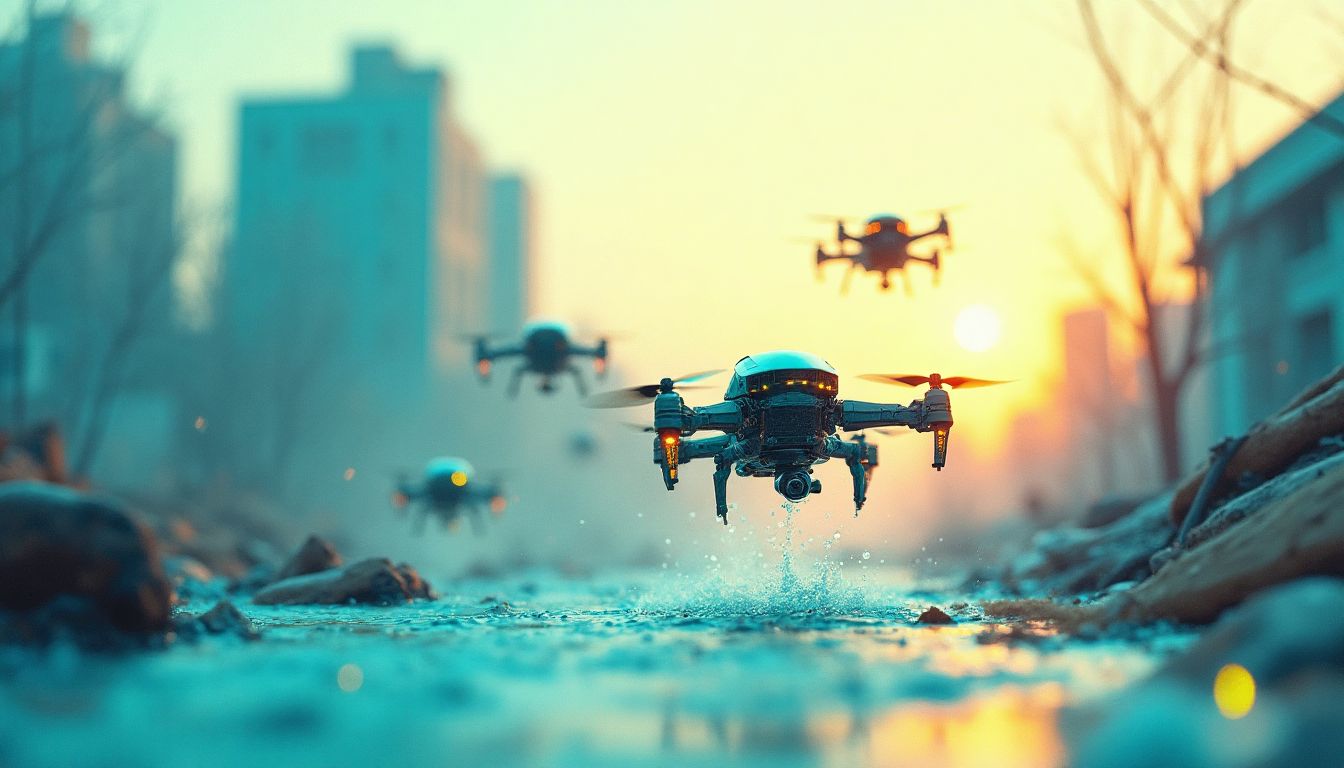
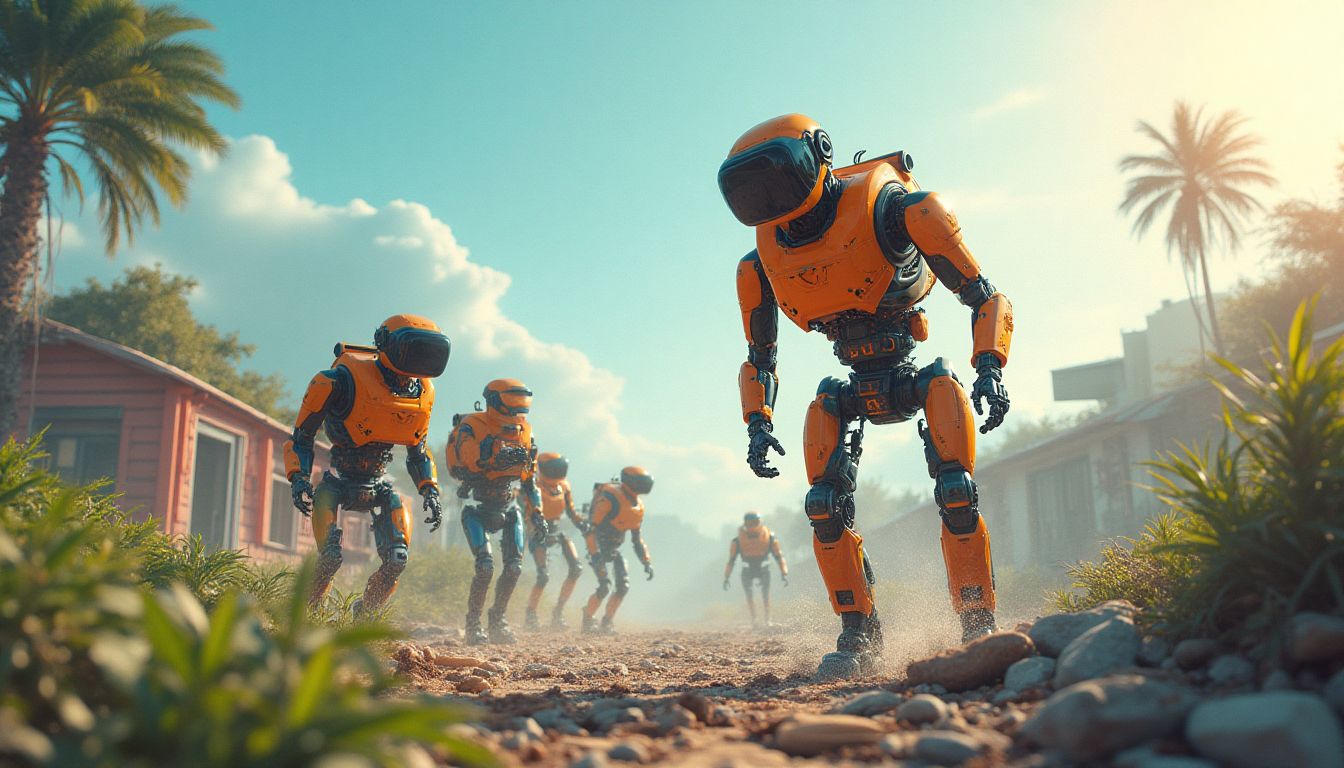
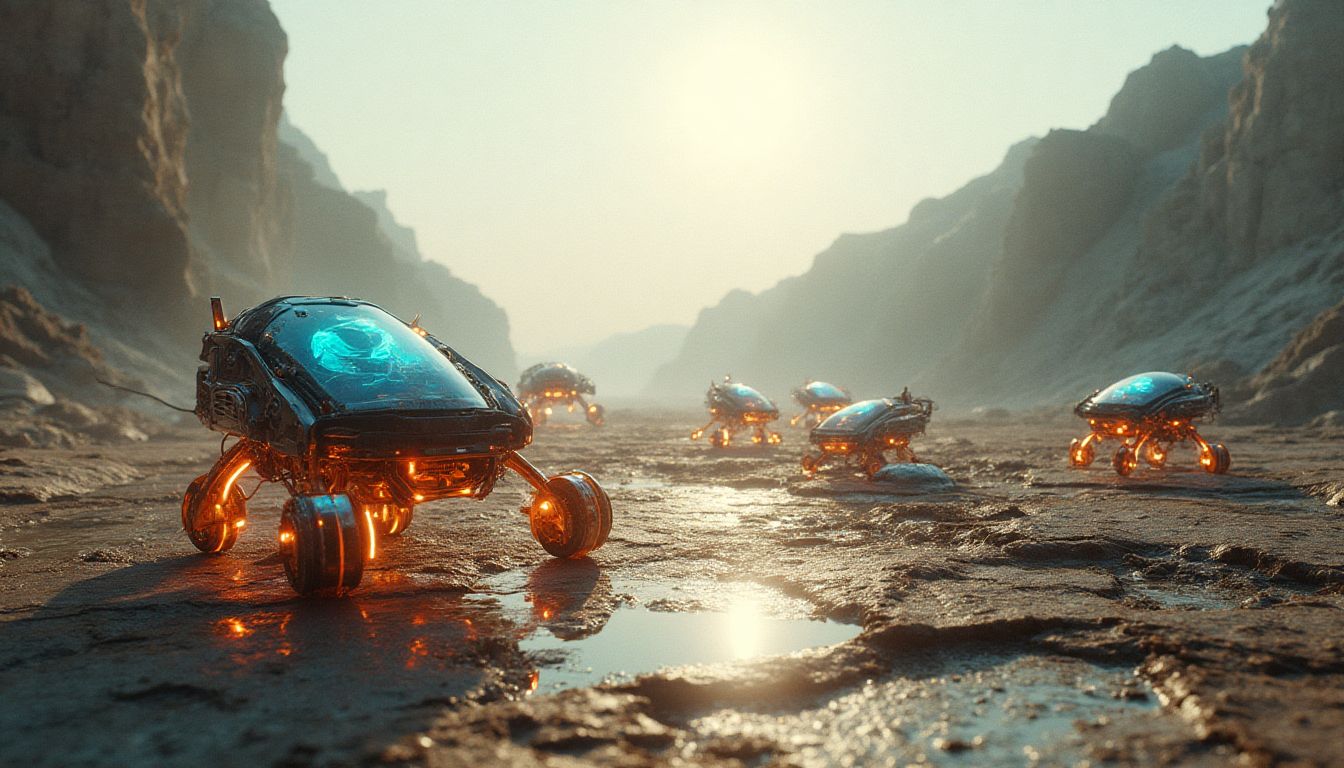
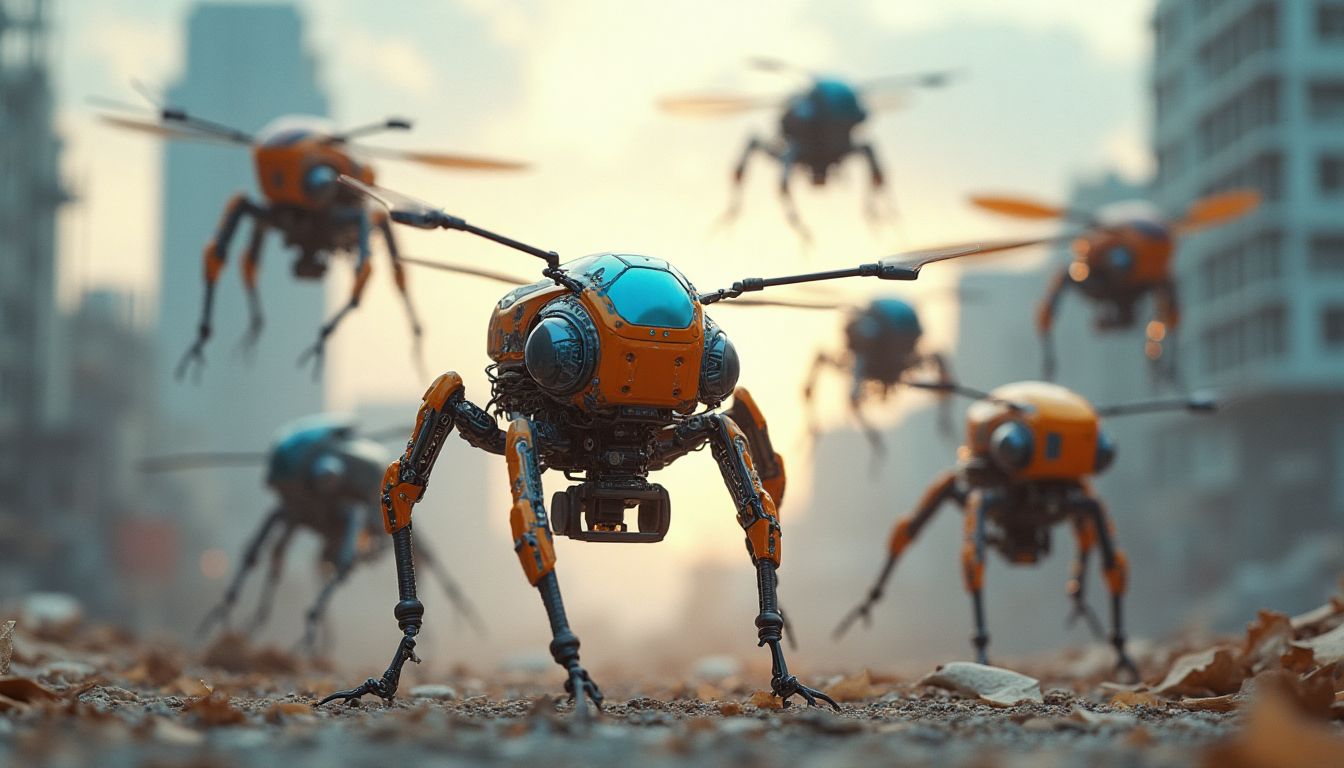
























Post Comment
You must be logged in to post a comment.